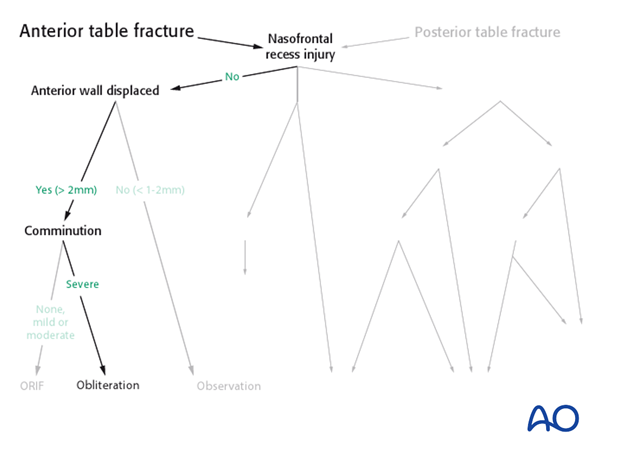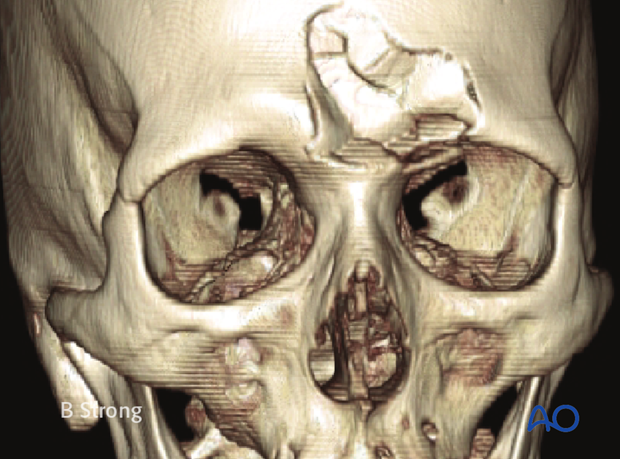Indications for surgery
Introduction
Treatment of frontal sinus fractures is complex and sometimes controversial. Appropriate treatment decisions can be made by assessing 5 anatomic parameters, these include the presence of:
- An anterior table fracture (A)
- A posterior table fracture (B)
- A nasofrontal recess fracture (C)
- A dural tear (CSF leak) (D)
- Fracture comminution
Treatment options would include:
- Observation
- Open reduction internal fixation (ORIF)
- Obliteration
- Cranialization
- Ablation
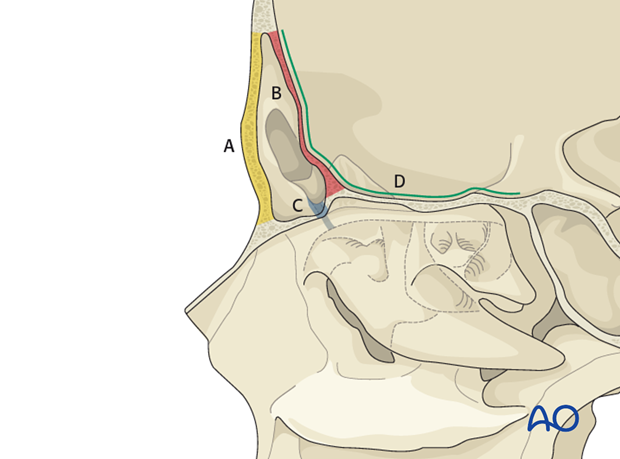

Observation
Minimally displaced anterior table fractures (< 1-2 mm) not involving the nasofrontal recess injury can be observed with little risk of long term morbidity.

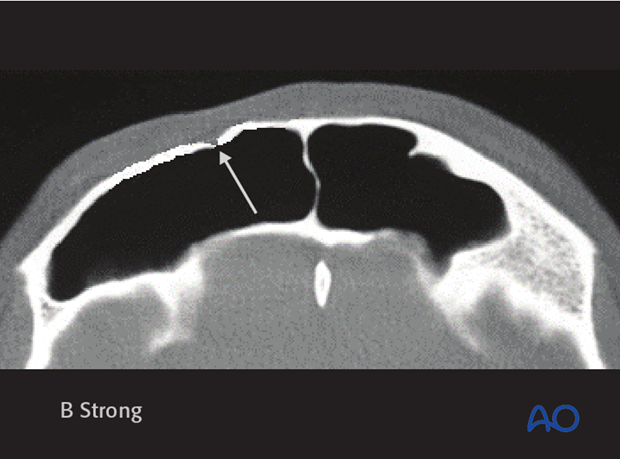
Open reduction internal fixation (ORIF)
Fractures with greater displacement (> 2 mm) not involving the nasofrontal recess injury present little risk to sinus function. However, the risk of an esthetic deformity increases corresponding to the fracture size/displacement.
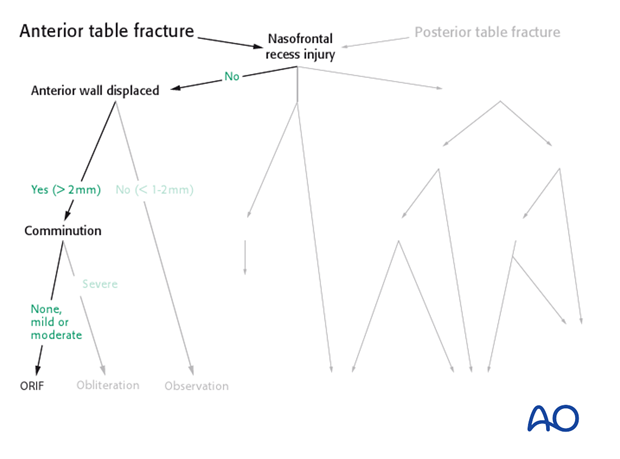
CT scan demonstrates mild comminution and moderate depression of a patient without nasofrontal recess injury (not shown).

Obliteration
Severe comminution of the anterior table (with or without involvement of nasofrontal recess injury) may make open reduction with the existing bone fragments very challenging. Mucosal disruption can result in a non-functioning sinus postoperatively. In this unusual situation sinus obliteration may be required.
